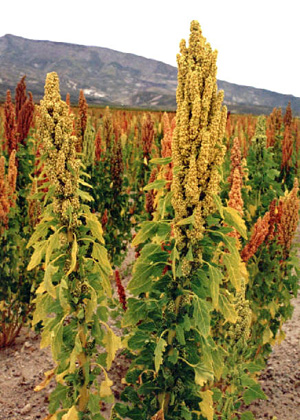Quinoa cultivation in Chile presents an ancient and active complex of geographic, climatic, social and cultural interactions that has determined its current biodiversity in the three main growing zones (north, central and south). Importantly, these interactions involve the participation of farmers, whose activities are at the base of seed exchange networks due to their knowledge and in situ conservation of genetic diversity.
The present study reports how a better understanding of farmers’ seed exchanges and local production practices could impact the genetic structure and diversity of quinoa at national scale in Chile. Using field interviews and characterization of 20 microsatellite genetic markers in a multi-origin set of 34 quinoa accessions representative of Chile and the South American region, the phenetic analysis of germplasm was consistent with the current classification of quinoa ecotypes present in Chile and Andean zone. This allowed the identification of five populations, which were represented by quinoa of Salares (northern Chile), Coastal/Lowlands (central and southern Chile), Highlands (Peru, Bolivia and Argentina) and Inter-Andean Valleys (Ecuador and Colombia).
The highly informative quality of the markers used revealed a wide genetic diversity among main growing areas in Chile, which correlated well with natural geographical–edaphic–climatic and social–linguistic context to the expansion of quinoa biodiversity. Additionally, in addition to ancient seed exchanges, this process is still governed by the diverse agricultural practices of Andean farmers. Genetic erosion is considered an imminent risk due to small-scale farming, where the influence of increased migration of people to urban systems and export-driven changes to the agro-ecosystems may further reduce the diversity of quinoa plants in cultivation.
Source:
Fuentes, F., Bazile D., Bhargava A. and Martínez E. A. 2012. Implications of farmers’ seed exchanges for on-farm conservation of quinoa, as revealed by its genetic diversity in Chile. The Journal of Agricultural Science. DOI: 10.1017/S0021859612000056.

No comments:
Post a Comment